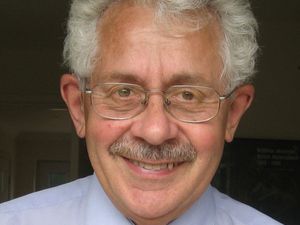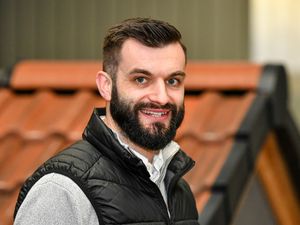Hamlet's tribute to heroic World War II pilot George
Amid the atrocities of war are stories of remarkable human kindness.
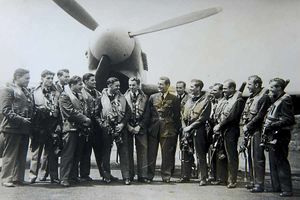
Among them is the heart-warming tale of the determination of a French community to honour an RAF pilot from Kinver, who died when his plane was shot down over Normandy.
Pilot Officer George Boucher was just 21 when he was shot down on August 5, 1944, landing in a hamlet with a population of fewer than 1,000 people.
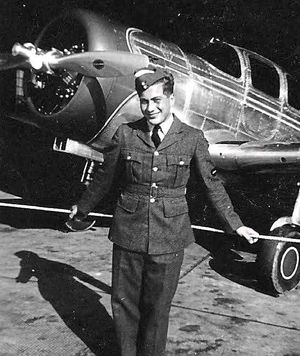
Among them was Claude Pailleux. He went immediately to the wreck, which had been surrounded, he later recalled, by around 100 German soldiers.
After a long process of negotiation, at the risk of reprisal, he convinced them to let him take the body.
In a 1946 letter, Claude wrote: "The plane came down in flames in a field of beetroot. The pilot however had time to jump by parachute, but without doubt too near the ground, for it had hardly opened. On the morrow – Sunday – we were able to make him a coffin of oak by a local carpenter to bury him worthily.
"We buried him at the foot of a little shrine at the edge of a highway in the hamlet of Caligny. Around 100 people were present at the funeral at 3pm in the afternoon. He was buried in a shroud and a score or so of wreaths were placed there. He was therefore buried with all the respect due to his courage."
Caligny was liberated by the 11th British Armoured Division on August 16, 11 days after George was killed.
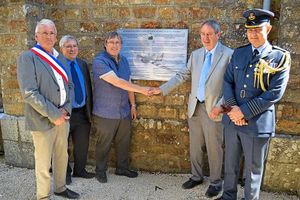
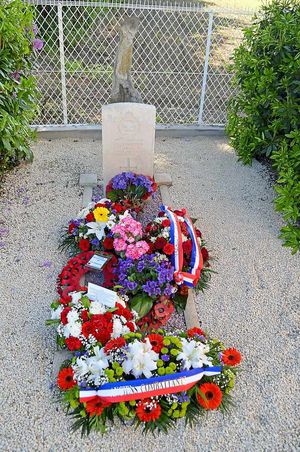
In the letter to George's parents, Claude promised them he would take care of George's grave, a promise which the Pailleux family and the community have kept ever since. This was in keeping with the wish of George's mother that George remained in Caligny rather than being transferred to a military cemetery.
A close friendship has since grown between the two families, separated by the English Channel.
The Boucher family first visited George's grave in the mid-1960s and have been travelling to the area regularly since.
This culminated this month in the unveiling of a memorial plaque, telling George's story, on the wall of the chapel next to his grave. The plaque includes details of his remarkable military career – and how he was protected from German soldiers after an earlier crash landing in France.
In October 1943 he made a forced landing in the Pas-de-Calais after his plane was damaged while attacking a train. In a letter home he explained how he was saved by the Resistance. He wrote: "I ran on to a road, on which was a Frenchman in a cart. I had learned French at school and spoke to him. He said he could not help me, but told me to hide in the hedge. About an hour after the crash three German soldiers arrived and mounted guard over the aircraft, and I learned afterwards that two lorries loaded with soldiers went round the roads in the district."
With the help of the French Resistance, George avoided capture and survived the long and hazardous journey through France to Spain, returning safely to England.
The plaque was paid for after the Boucher family managed to raise £1,655 in donations from family and friends. George's nephew, Mike Boucher, travelled to the unveiling ceremony with brother David and those who had helped with the appeal. He said: "The ceremony itself was a wonderful occasion but as I said in my address on the day the grave has been tended ever since George was buried in 1944. Claude Pailleux's widow is still alive. We sort of grew up with her family.
"The grave is very unusual in that it is on its own and people may get the feeling it is forgotten but it is not. It is a wonderful story associated with it." Mr Boucher, who is the assistant headteacher at Summerhill School in Kingswinford, says his family are immensely grateful to those from the French Resistance who helped George and, of course, the people of Caligny.
He added: "For Claude to have negotiated a burial with German soldiers in the middle of the Normandy campaign takes some doing. His sister Jacqueline later became the prime carer for the grave for 30 or 40 years. Then the mayor of Caligny gave the promise the community would always look after the grave, which has been kept to by all the mayors since. It is astonishing."

